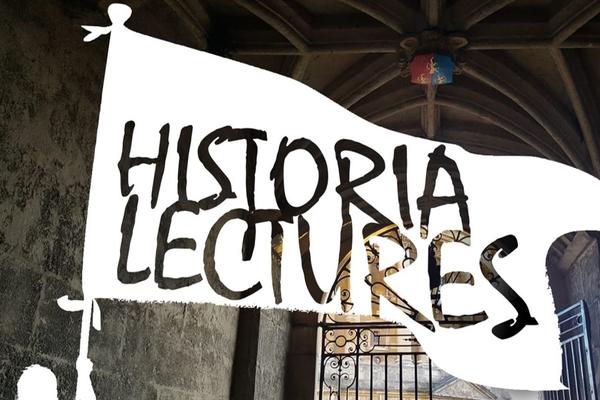‘Alice Longspee says all things are well’: The Business Dealings of a Nun and Scholar of Oxford in the 15th Century
You may recognise the ruins of Godstow Abbey from your strolls across Port Meadow. Whilst today we may walk through the meadow to reach our 10,000 steps, or to swim in the river during the summer, in the medieval period some students at the University of Oxford ventured across from the city to visit the nuns at Godstow. Eileen Power referred to Godstow nunnery as ‘a happy hunting ground’ for Oxford students ‘constituted specifically for their recreation’.[1] Although this image fits the stereotype of medieval students using and abusing women to assert their own masculinity, it fails to explore the ways in which these women were also active participants in these relationships.[2]
Injunctions were issued in an attempt to restrict these interactions in 1284, 1432, 1434 and 1445, which responded to some nuns actively seeking out conversations and more with the students. Of course, the scholars were not subject to the same level of scrutiny and prohibition which leads to a degree of misogynist victim-blaming. It’s also important to remember that these sources only reflect gossip circulating in the convent and how bishops, who were not present in the nunnery, judged this information. By teasing the text apart, we can see how these injunctions were created based on a range of women’s voices, as the nuns describe the actions of their peers during visitations. This allows us to see the broader and deeper range of relationships taking place, motivated by friendship, sexual pleasure, emotional connections, and even the chance to experiment with gender and sexual identity. Some nuns actively initiated and engaged in these sexual relationships, but this does not mean that these cases did not involve sexual abuse and coercion, nor should they overshadow cases of rape. To demonstrate the complexities of such cases and the wrongful assumptions of these injunctions, I will look at the case of Alice Longspee.
In May 1445, Alice Longspee, a nun at Godstow, was reported to be having an inappropriate relationship with Hugh Sadler, a scholar in priest’s orders. During a visitation by Lord William Alnwick, the Bishop of Lincoln, Dame Alice Henley testified that Sadler often communicated with Longspee ‘who he has said to be his kinswoman and under such pretence holds often converse with sister Longspee’. Family members were allowed to visit their relatives who were nuns in the convent, but Henley seems suspicious of whether Sadler and Longspee are related. Dame Amy Hardelle also told Lord Alnwick that Longspee ‘used to hold parley after an exceedingly suspicious fashion in the church of the convent with sir Hugh Sadylere … despite the prohibition of the abbess’. In contrast, Longspee reported that ‘all things are well’.[3]
Clearly, the other nuns disapproved of Alice Longspee’s actions, perhaps as it went against the ideal model of a religious woman – pursuing chastity and rejecting contact with men. Hardelle and Henley may have believed they were protecting Longspee from digressing into an immoral life, while ensuring they upheld their own reputations and the reputation of the convent. However, these reports could also demonstrate the politics within the convent as some nuns used gossip against each other. Longspee was threatened with ‘imprisonment and of disciplines according to the rule and to keep to the frater and cloister for a year’. These reports suggest that Longspee and Sadler were perhaps engaging in an improper relationship.
Yet, the reports only refer to conversations held between Longspee and Sadler. It may be natural to assume that this relationship was of a sexual nature given the disapproval of some of the other nuns and could even be backed by accusations against Sadler for pimping and sex work in 1444.[4] However, this would be incorrect.
Only a week after this report, Alice escaped the convent and ran away with John Bengeworth, a monk who had been imprisoned ‘for his ill desert’, with both leaving behind their religious lives. Longspee and Sadler could have been engaging in an intimate relationship of their own, but it seems more likely that Sadler was being used as an architect for Alice’s escape. Given Sadler’s dealings as a pimp, and his position as a priest, he could have had connections that allowed Alice to contact Bengeworth about their getaway. Longspee was clearly motivated by a deeper connection with Bengeworth, giving up her habit for a lasting and affectionate relationship. The conversations that took place between Longspee and Sadler were probably of a business nature.
The story of Alice Longspee and Hugh Sadler shows us why we must not take the injunctions and visitation records at face value and consider interactions between women and scholars falling within a range of options. Some of the nuns at Godstow were seeking relationships with university men for companionship, sexual pleasure, intimacy, and even to experiment with their own gender and sexual identity. These motivations could be intertwined, and the types of relationships were not mutually exclusive. By teasing these sources apart, we can hear female voices and see these women as individuals, to understand how and why women interacted with university men.
-- Elena Rossi
[1] Eileen Power, Medieval English Nunneries c. 1274 to 1535 (Cambridge, 1922), p. 395.
[2] Ruth Mazo Karras, From Boys to Men: Formations of Masculinity in Late Medieval Europe (Philadelphia, 2003), pp. 67-108; Hannah Skoda, ‘Student Violence in 15th-century Paris and Oxford’, in Aspects of Violence in Renaissance Europe, ed. by J. Davies (Farnham, 2013), pp. 17-40.
[3] Visitations of Religious Houses in the Diocese of Lincoln, ed. by A. Hamilton Thompson, 3 vols (London, 1915-1927), II, pp. 91, 116.
[4] Registrum Cancellarii Oxoniensis, 1434-1469, ed. by Herbert Edward Salter, 2 vols (Oxford, 1932), I, p. 97.




